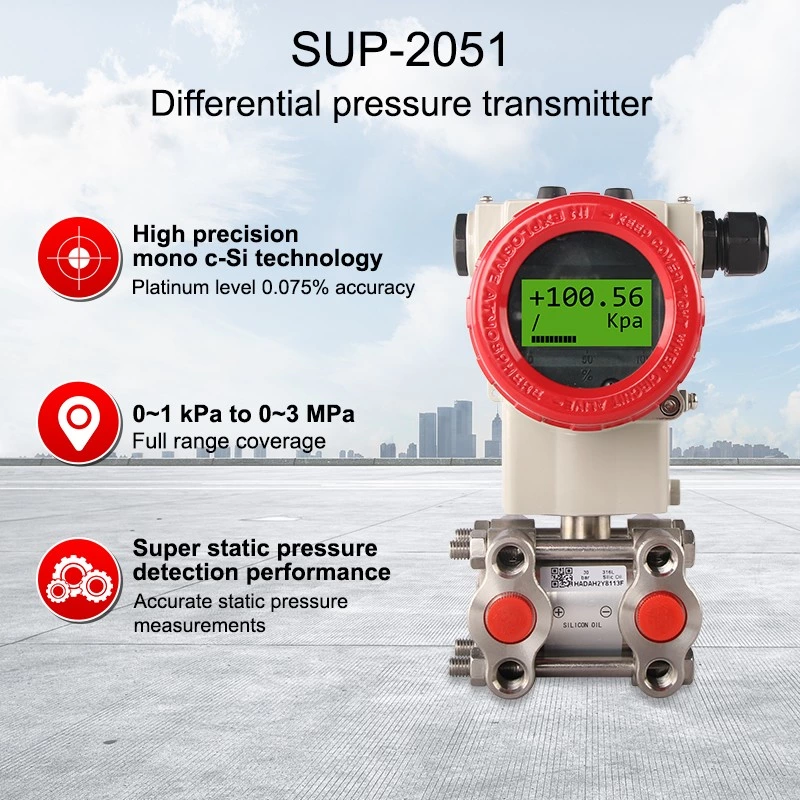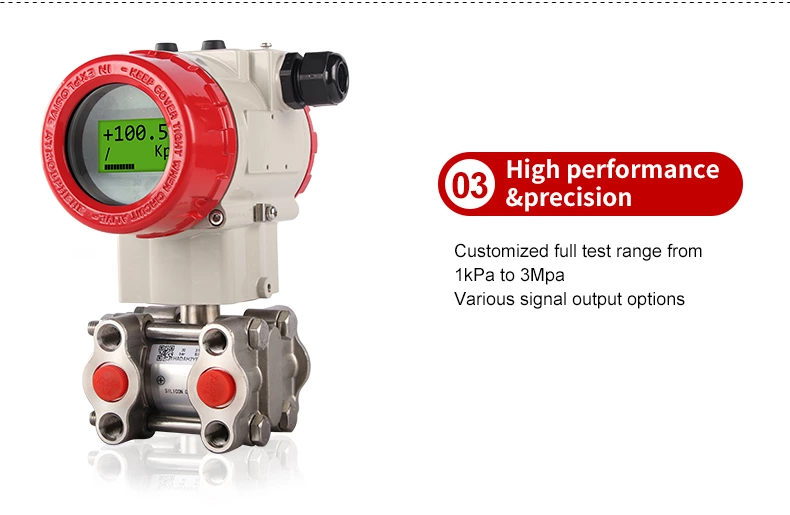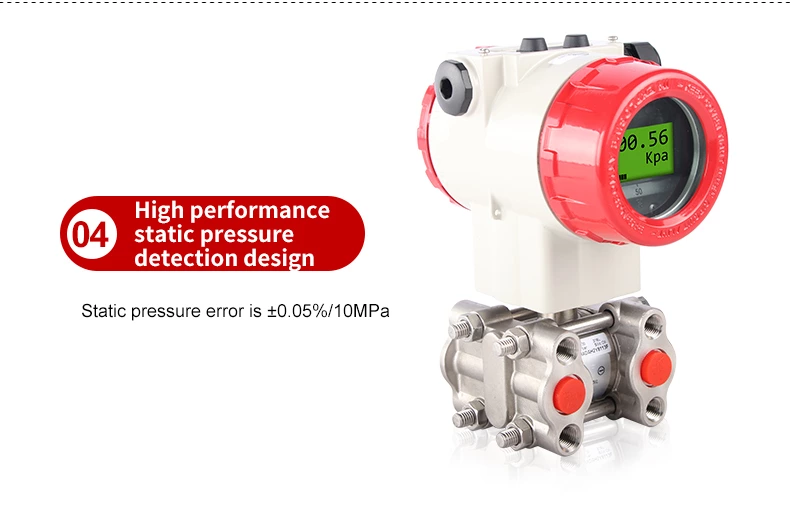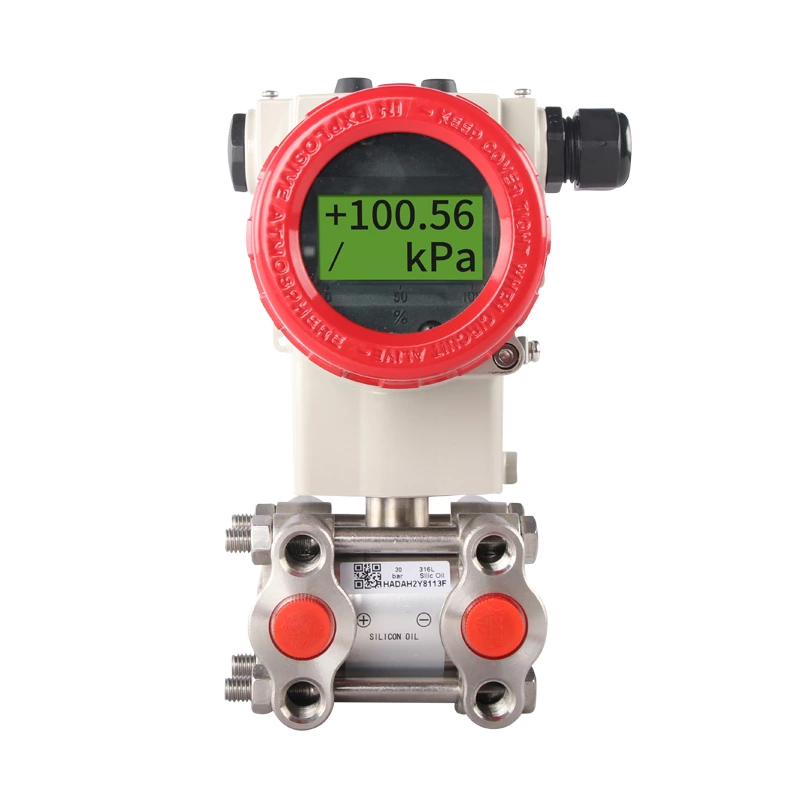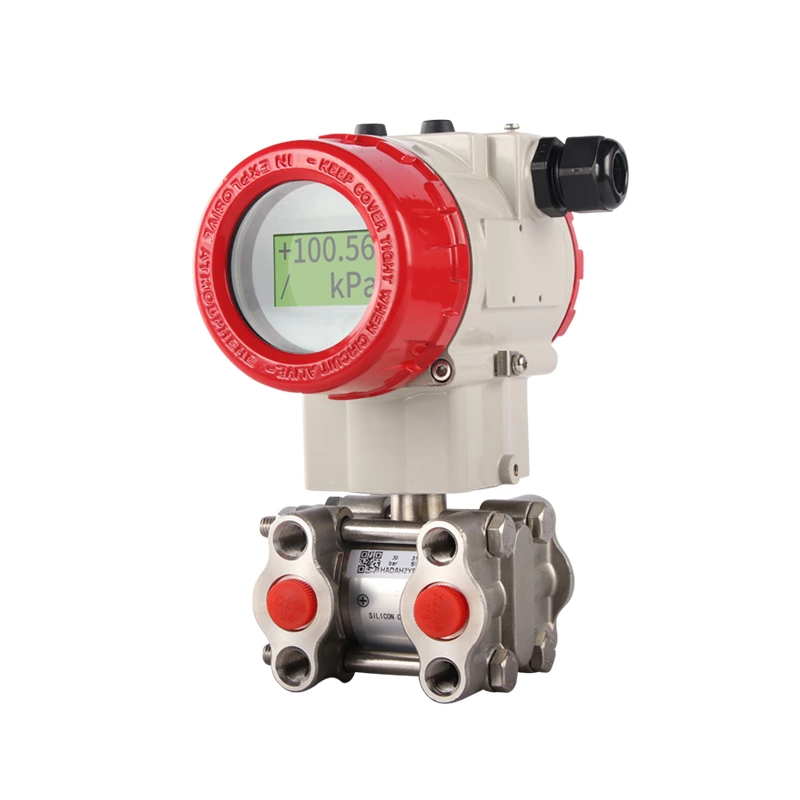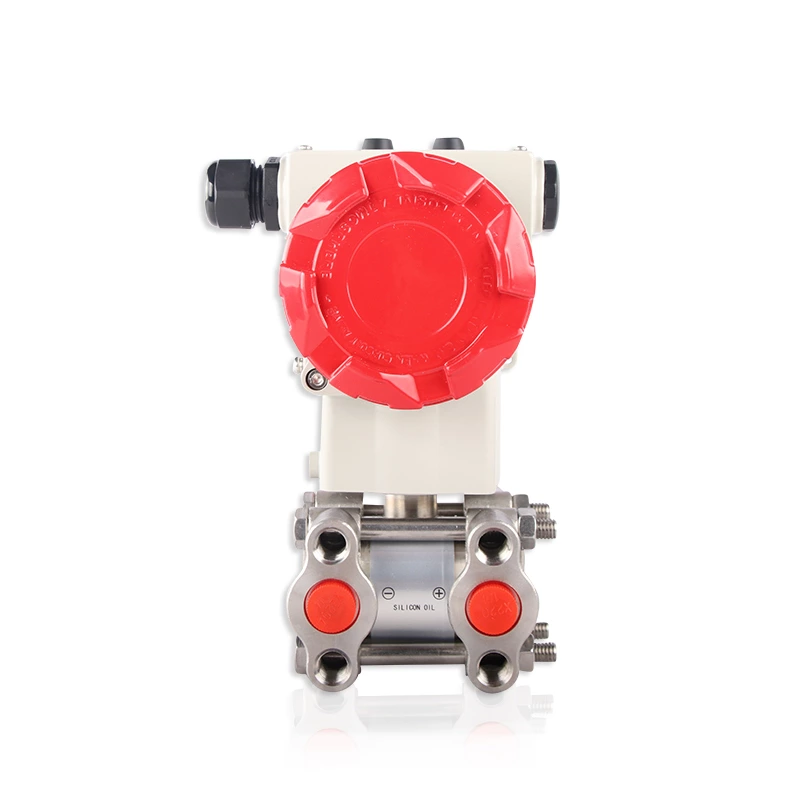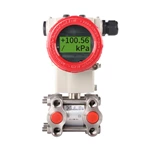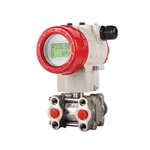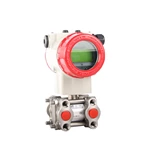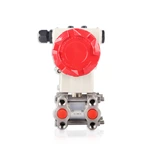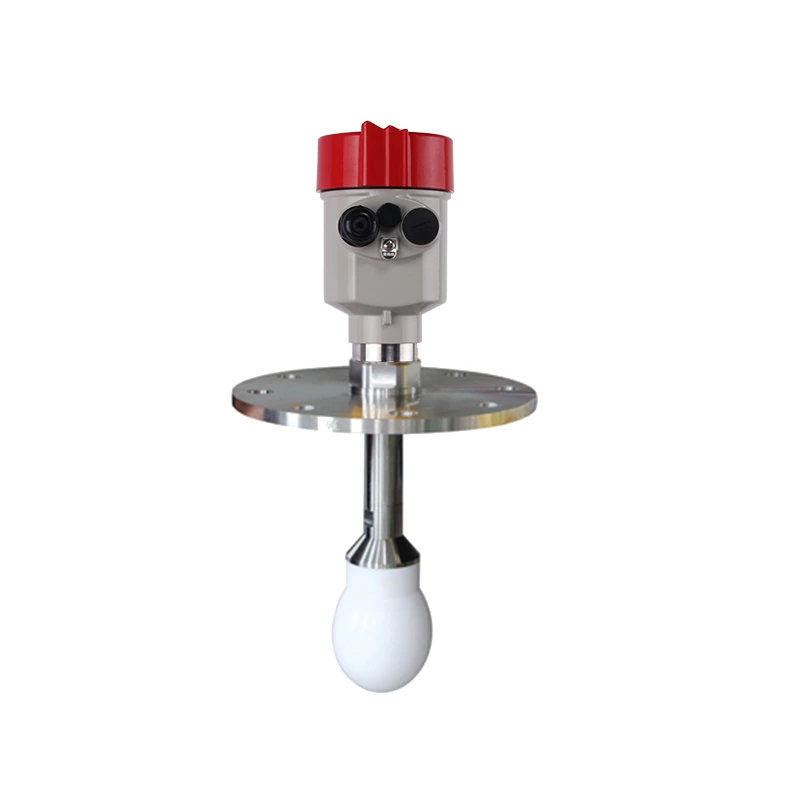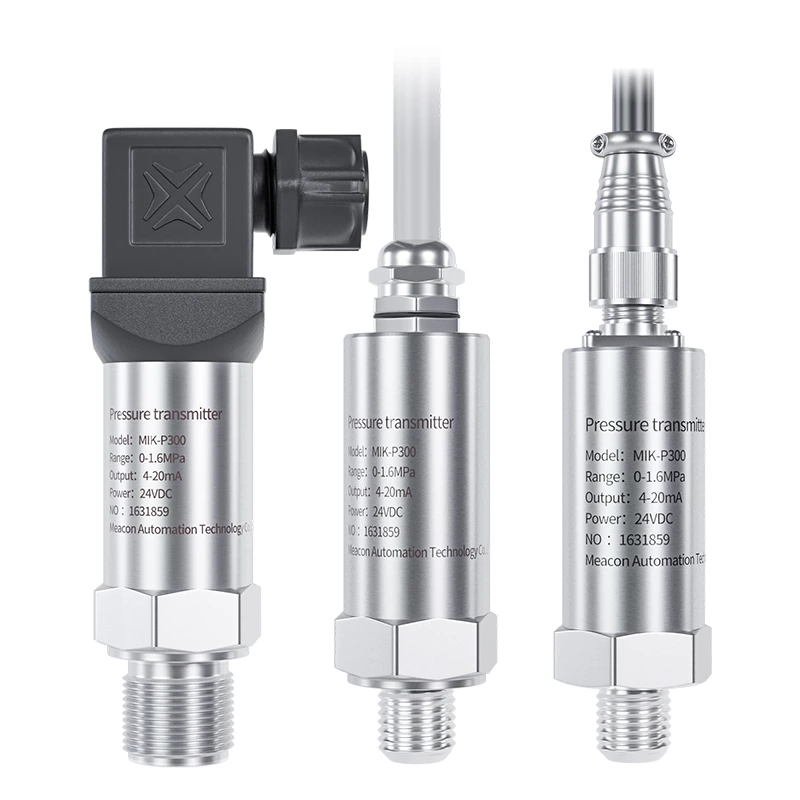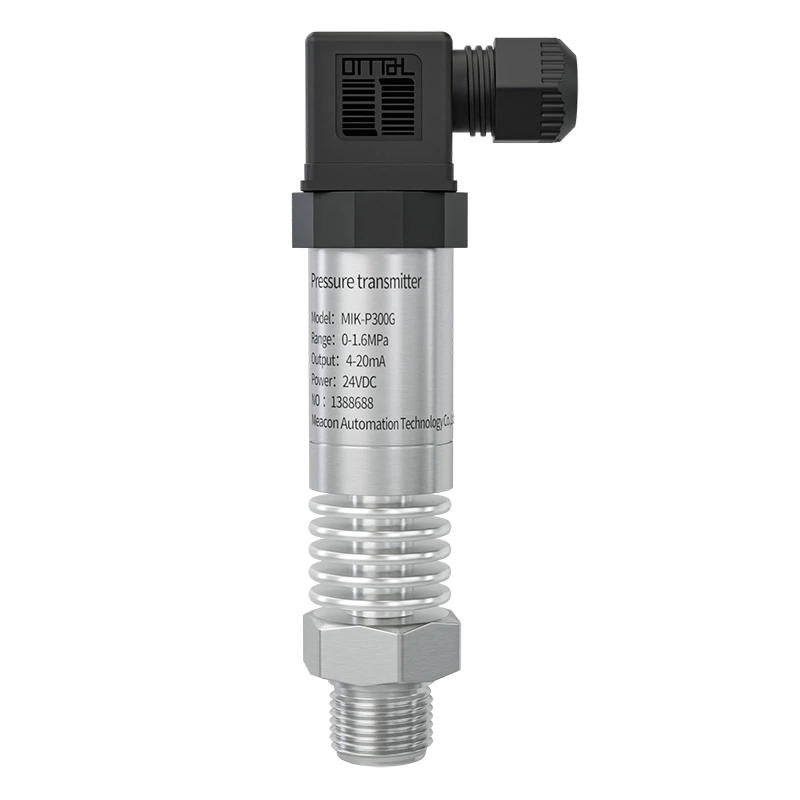| Product |
Differential Pressure transmitter |
| Model |
MIK-2051 |
| Measure range |
-100kPa···0~0.1kPa···3MPa |
| Indication resolution |
±0.075%; ±0.01%FS |
| Ambient temperature |
-40 ~ 85 ℃ |
| Medium temperature |
-40~100℃ |
| Storage temperature |
-50~85℃ |
| Output signal |
4-20mA analog output / with HART communication |
| Shell protection |
IP67 |
| Diaphragm material |
Stainless steel 316L, Hastelloy C, supports other custom |
| Product shell |
Aluminum alloy, the appearance of epoxy coating |
| Weight |
3.3Kg |
A DP transmitter, also known as a differential pressure transmitter, is a type of electronic device used in industrial and process control applications to measure the difference in pressure between two points in a fluid system. It essentially compares the pressure at two different locations in a process and converts that pressure difference into an electrical signal.
How it works:
Pressure Sensing Elements: DP transmitters typically have two pressure sensing elements (such as diaphragms or Bourdon tubes) that are exposed to the process fluid at the two different points where the pressure is to be measured.
Pressure Difference Measurement: As the fluid flows through the system, it exerts different pressures on the two sensing elements. The DP transmitter measures the difference in pressure between these two points.
Transducer and Electrical Output: The pressure difference is then converted into an electrical signal by a transducer (commonly a strain gauge) inside the DP transmitter. This electrical signal is proportional to the pressure difference.
Signal Transmission: The electrical signal is then sent to a control system, data acquisition system, or other monitoring devices. It can be transmitted via analog signals (such as 4-20 mA) or digital protocols (like HART or Foundation Fieldbus) to communicate the pressure information.
Measurement and Control: The received pressure information can be used for various purposes, such as monitoring the level in a tank, measuring flow rates, controlling valves, or ensuring safety in a process by detecting abnormal pressure conditions.
DP transmitters are widely used in industries such as oil and gas, chemical, water treatment, power generation, and many others. They are highly reliable and accurate instruments that play a crucial role in maintaining process efficiency and safety.
Applications of SUP-2051 Differential Pressure transmitter
As the name suggests, DP transmitters are primarily designed for differential pressure measurement. They are used in various applications where the difference in pressure between two points needs to be monitored, such as monitoring pressure drops across filters, heat exchangers, or pumps.
Hydraulic Systems: DP transmitters are used in hydraulic systems to monitor pressure differences and ensure smooth operation and safety.
Steam Systems: DP transmitters are employed in steam systems to measure the pressure difference across steam traps and identify malfunctioning traps.
Air Handling and HVAC: In ventilation systems, DP transmitters are used to monitor air pressure differences, filter conditions, and airflow.
Environmental Monitoring: DP transmitters are used in environmental monitoring equipment to measure pressure changes in weather systems or natural gas pipelines.
